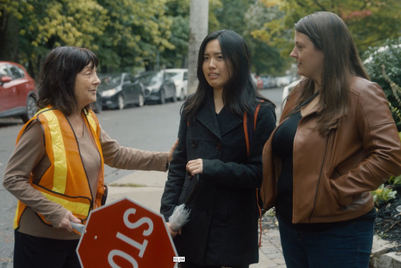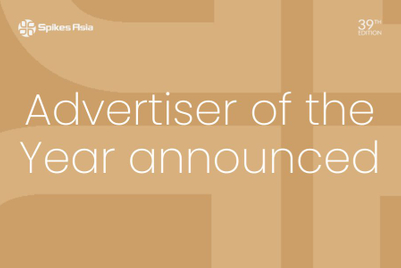
Recently, we covered a campaign that had some of the hallmarks of being 'scam'—work created mainly to enter and hopefully win awards. I'm not going to name the campaign, or link to it, or describe it in detail. The identities of those involved aren't important to the point I want to make, and the agency involved has probably suffered enough, as you shall see.
The work in question featured great visuals, but with a suspiciously small brand logo. It also came to us with precious little detail about when and where the campaign was running, and the tone of the work seemed a bit out of character compared with the brand's usual fare.
If you've been around this industry long enough, these elements, taken together, create a distinct aroma: award bait.
Whether you use that term or prefer the term 'scam', work made mainly with awards in mind is a long-standing issue in the industry. Some say it's a disgrace that damages integrity. Some argue that there's not much harm in it. After all, creatives get a chance to show their chops and build their CVs, agencies get more metal for their awards shelves, awards organisers get their entry fees, and brands get to brag about their award-winning marketing.
I'm not here to debate all that. I'm simply here to observe that scam is a risky game, as this case illustrates.
As the author of our writeup about the campaign (our furry pal Ad Nut) observed, the work didn't really make sense on its face. Without an accompanying press release to explain it, Ad Nut would have had no idea what message the image and copy were trying to convey.
If you go down the scam road, impressing an awards jury becomes your priority, rather than delivering a clear message to serve a client objective. The risk of muddled messaging and confusion rises.
We sent some questions off to the agency, hoping for details about when and where the campaign was actually running. But we went ahead and published our brief item, because the missing info wasn't critical to the mission of such an article, which is mainly to let members of the creative community see the work of their peers.
Many hours after we published our article, we received a reply that didn't answer our questions, but instead asked us to please ignore the press release entirely. Sorry, too late. A short time later—after someone discovered we had already published our article—we received an "URGENT" request to take the story down.
Allow me to digress a bit to explain that this is not something we do. For reasons of integrity, we don't remove stories, except in the most extraordinary and dire of circumstances. In my nearly 10 years here, I think we've done it twice—and one of those was only a temporary removal. We are always happy to hear feedback and to correct factual errors with the stories we publish. And for transparency's sake, we explain any changes we make in clear editor's notes.
We don't, however, make stories disappear just because someone involved doesn't want the story out there. We have to maintain a commitment to reporting accurate information, even when some people don't like it. If we don't hold that line, it becomes impossible to report on truly controversial subjects.
We explained as much to the agency and asked why the article was such a problem, seeing as we'd accurately reported the information the agency itself sent out. The answer we received was that the ads had been misunderstood by the audience. In the social context of the market in question, people thought the work was communicating something that the agency had no intention of communicating, and this had led to "a very difficult time" for the brand and the agency.
Such misunderstanding can and does happen with any kind of campaign, of course, but it seems to be more common with scam work. Which makes perfect sense. If you go down the scam road, impressing an awards jury becomes your priority, rather than delivering a clear message to serve a client objective. The risk of muddled messaging and confusion rises when you make that choice. And that can end badly when the work lands the wrong way with the public, leaving the client with egg on its face and the agency struggling to clean up the mess.
We take no pleasure in the agency's plight. But we follow journalistic standards, so the article remains in place. And the agency really has no one to blame but itself. It decided to create work that I highly suspect was 'scam'. That was a gamble. It's a bet that often pays off, and many agencies are willing to roll the dice. But just like when you put your chips down in a casino, you should never gamble more than you can afford to lose—such as, say, a client relationship.
In the end, it's a great case study. Not the kind an award jury will watch, but one every agency should take a look at.
Matthew Miller is the managing editor of Campaign Asia-Pacific.



.jpg&h=334&w=500&q=100&v=20250320&c=1)
.jpg&h=334&w=500&q=100&v=20250320&c=1)
.jpg&h=334&w=500&q=100&v=20250320&c=1)



.png&h=334&w=500&q=100&v=20250320&c=1)

.png&h=334&w=500&q=100&v=20250320&c=1)


.jpg&h=268&w=401&q=100&v=20250320&c=1)





